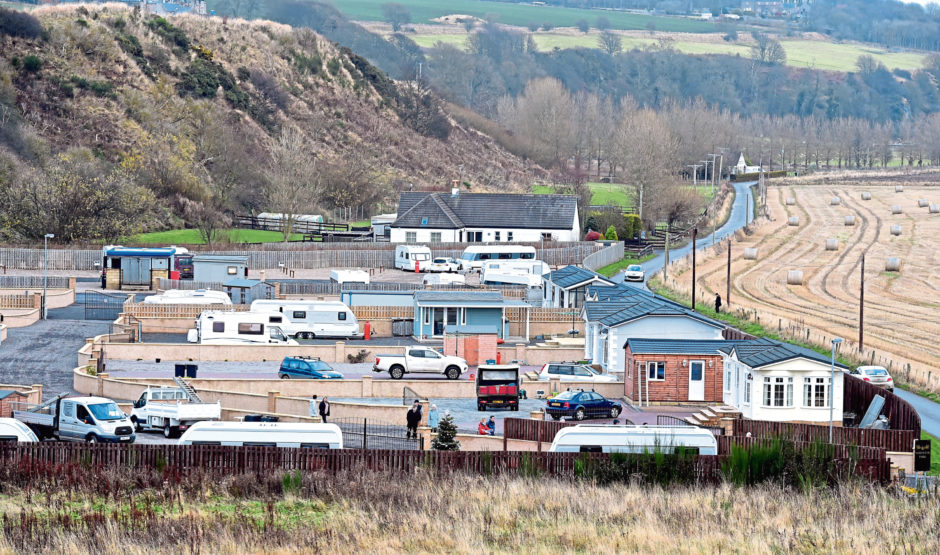The case for travellers remaining at a contested site has been strengthened after it didn’t flood during last week’s extreme weather, residents have claimed.
The encampment at North Esk, earn St Cyrus, has been a source of dispute since Travellers made their home there in 2013 without prior authorisation.
Residents say Aberdeenshire Council has been supportive and councillors gave the site the green light in 2016.
However, environmental watchdog Sepa objected to the plans, claiming the site is a flood risk. This led to the council’s decision being overturned by Scottish Ministers.
Now residents argued that last week’s torrential downpours, which caused flooding in Stonehaven, Perth, and Fife, have proved that the land is safe to live on.
Jimmy Mason, who has stayed on the site for five years, said: “We went to check the river when the heavy rain started and it was up by about eight inches. We went again as the day went on and it was at about 12 inches.
“We thought it was best to report that, so we did so to the Scottish Flood Forum as the river is about 120 feet away from the site.
“But the next morning there was no flooding at our site. Obviously it was wet, but there was no flooding. Which is remarkable considering how bad it was elsewhere.
“It proves that the land is not a flood risk. We wouldn’t want to live here if we thought it would flood.”
Mr Mason also said a Sepa assessment that it would take residents four hours to evacuate the site in the event of flooding is grossly overestimated.
He said: “We have done practice runs and done it in 16 minutes.”
Alan Seath, a planning consultant working on behalf of the community, has said different models are being used to assess the risks posed at the land.
He said: “The Sepa model is a completely legitimate way of working these things out, but the recent terrible weather just goes to show that the area is safe.
“We are keen to have a hearing out in the open with Scottish ministers. We have nothing to hide.”
A Sepa spokeswoman said: “Flooding in Aberdeenshire on Wednesday August 12 was largely caused by extremely heavy rain due to thunderstorms. This type of rain is often extremely localised, meaning that features like towns can be heavily impacted while large features like river catchments can absorb the event. If some parts of a river catchment receive the heaviest rain, whilst other parts receive no rain at all, then the overall flow will not be exceptional.
“The peak flow on the River North Esk measured on August 12 at Sepa’s nearby Logie Mill gauging station was not affected, and in fact the flows measured on that date have already been exceeded this year seven times.”










